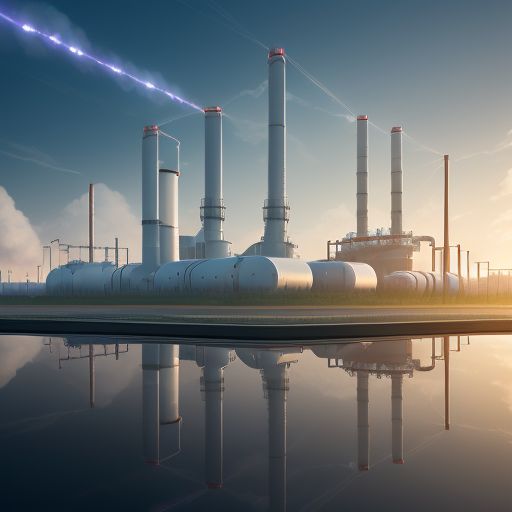Hydrogen: The Lightest and Most Abundant Element
Hydrogen is the chemical element with the atomic number 1 and is represented by the symbol H. It is the lightest and most abundant chemical element in the universe, making up about 75% of its elemental mass.
Properties of Hydrogen
Physical Properties
- Atomic Mass: 1.00794 u (unified atomic mass units)
- Atomic Number: 1
- Electron Configuration: 1s1
- Phase at Room Temperature: Gas
- Boiling Point: -252.88 °C
- Melting Point: -259.11 °C
- Density: 0.0899 g/l

Chemical Properties
- Electronegativity: 2.20 (Pauling scale)
- Ionization Energy: 1312 kJ/mol
- Reactivity: Highly reactive, especially with oxygen and halogens
Occurrence and Production
Hydrogen is the most abundant element in the universe, but it is not found in its elemental form on Earth. Instead, it is found in compound form, such as:
- Water (H2O): Hydrogen is a major component of water, making up about 2/3 of its molecular weight.
- Hydrocarbons: Hydrogen is a component of many hydrocarbons, such as methane (CH4), propane (C3H8), and butane (C4H10).
- Biomass: Hydrogen is also found in biomass, such as wood and agricultural waste.
Hydrogen can be produced through several methods, including:
- Steam Methane Reforming: This is the most common method of producing hydrogen, where high-temperature steam is used to split methane into hydrogen and carbon dioxide.
- Electrolysis: Hydrogen can also be produced through electrolysis, where an electric current is used to split water into hydrogen and oxygen.
- Thermochemical Water Splitting: This method involves using heat to split water into hydrogen and oxygen.

Uses of Hydrogen
Hydrogen has several uses, including:
- Energy Storage: Hydrogen can be used as a form of energy storage, where it is converted into electricity through fuel cells.
- Transportation: Hydrogen can be used as a fuel for vehicles, such as cars, buses, and trucks.
- Power Generation: Hydrogen can be used to generate electricity in power plants.
- Industrial Processes: Hydrogen is used in several industrial processes, such as the production of chemicals, fuels, and pharmaceuticals.
Benefits and Challenges
Benefits
- Zero Emissions: Hydrogen produces only water vapor and heat as byproducts, making it an attractive alternative to fossil fuels.
- Abundant Resource: Hydrogen is the most abundant element in the universe, making it a virtually unlimited resource.
- Flexible Energy Carrier: Hydrogen can be converted into electricity, heat, or chemical energy, making it a flexible energy carrier.
Challenges
- High Production Costs: The production of hydrogen is currently more expensive than traditional energy sources.
- Storage and Transportation: Hydrogen is difficult to store and transport due to its low energy density and high reactivity.
- Infrastructure: The infrastructure for hydrogen production, storage, and transportation is still in its infancy.
Conclusion
Hydrogen is a promising energy carrier that has the potential to play a significant role in the transition to a low-carbon economy. While there are several challenges associated with the production, storage, and transportation of hydrogen, ongoing research and development are helping to address these issues. As the world continues to transition towards a more sustainable energy future, hydrogen is likely to play an increasingly important role.















